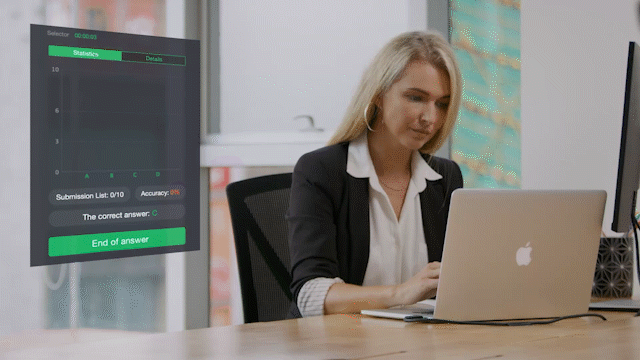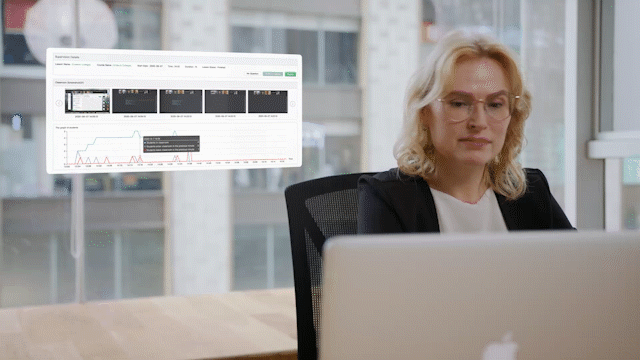It’s been over two years since the world witnessed a hasty transition from in-person learning to online learning relying on makeshift teleconferencing tools.
Educators struggle with semester-long fatigue, and students report emotional burnout. There is no doubt that platforms designed for online business meetings are a mismatch for remote learning.
What are some of the major concerns people have raised? And what does a truly education-centered software look like? Let’s move to these questions!

What Are the Major Problems People Have Raised?
1. Mainstream Platforms Discourage Interaction-Based Pedagogies
Remote learning technology needs to bear the characteristic of teacher-student interaction. The article “Harmonizing Technology with Interaction in Blended Problem-based Learning” just highlights how online learning technologies equipped with interaction benefit remote learning and problem solving.
However, far from being the next best thing to a physical classroom, popular video conferencing tools significantly constrain how we teach and learn.
Susan Blum, professor of anthropology at the University of Notre Dame, points out that these platforms only work for lectures or formal meetings, where everyone rallies around one central speaker. “As long as the symphony is directed by an authority figure, order can be kept … But in the more interactive, active classrooms that I aim to create, this is terrible,” Blum observes.
Along with limitations on teaching methods, effectiveness in the classroom also takes a downturn. Forbes recognizes a student-centered, multidirectional, and project-based instruction as more effective than a teacher-centric and unidirectional pedagogy, which characterizes current remote learning.
Lack of engagement is felt on both sides. According to surveys conducted collectively by the Dartmouth Center for the Advancement of Learning, Learning Design and Technology, and the Dartmouth Library and Information Technology and Consulting, students strongly express “a need for a better ‘sense of connection’ within their remote learning”.

2. Unfit Online Tools Produce Undue Psychological Burden
When external circumstances dictate that people don’t have any other choices but to meet online learning, it becomes all the more important to apply appropriate tools to the right tasks.
Bonnie Stewart, assistant professor of the University of Windsor, describes “a weird context collapse”, where one or few teleconferencing software cover all professional and personal interactions without a change of scene in one’s physical space. Although many believe the only answer to this cognitive confusion is the return of in-person teaching, some scholars suggest creative digital solutions. Professor of communication at Stanford University and founding director of the school’s Virtual Human Interaction Lab, Jeremy Bailenson, recommends playing with software settings or taking another step to try out new platforms in remote learning.
While virtual meetings can be mind-boggling for everyone, students particularly miss socializing as part of schooling. Young kids, like 10-year-old Nicholas Orlando Gonzales, express deep frustration with current method of online learning. “All you’re doing is just staring at a screen all day and not doing anything else,” he tells NPR. For older kids and young adults, Becky Lakin Gullan, professor of psychology at Gwynedd Mercy University, worries that social isolation might disrupt the development of long-term social skills during the critical period of emerging adulthood.
3. Certain Platforms Face Backlash over Security Concerns
Following the initial and total embrace of some popular teleconferencing tools, more and more governments and institutions are raising the alarm about cyber security issues.

When it comes to online learning, a number of school districts have disabled access to certain platforms “due to instances of hacking that created unsafe environments for teachers and students”. Bombing and hijacking of online classrooms cause problems that are beyond disruptions. For instance, University of Florida President W. Kent Fuchs tweeted that the school’s student government meeting was bombed with “racist messages, swastikas, pornography and death threats”. On a larger scale, the FBI warns that the intrusion of virtual classes with racist language and hate messages has become common occurrences within popular video conferencing software.
Despite that schools have issued instructions on how to navigate and prevent trolling in virtual classrooms, putting up with unsafe networks is not the way to sustain online learning. Amelia Vance, director of youth and education privacy at Future of Privacy Forum, emphasizes that “I’ve been pushing really hard on making sure that educators and administrators are using tools that were made for online learning”.
Thus, What Does an Education-Centric Platform Look Like?
1. Specific Features Required for Online Learning
After more than two years of trial-and-error with online learning, it has become increasingly clear that quality remote learning cannot be achieved through regular teleconferencing tools. Kipp Benley, senior fellow at the Center for Digital Education, outlines specific features required for online learning. In addition to basic needs such as security and digital tools designed for education, Benley highlights the importance of integrating affordances and supporting collaborations.
More detailed featured required for online learning, see the blog “7 Best Online Teaching Apps that Help Remote Teaching 2022”.

2. ClassIn as an Optimal Choice for Online Learning
In fact, many schools, including those in Spain, Japan and China, have adopted ClassIn, an education-centric platform designed for an interactive classroom experience. Compared to average video conferencing software, ClassIn tailors to the needs of remote learning through four pillars of core functions: a virtual classroom with educational tools, an integrated LMS and IM system, a seamless live streaming service, as well as a powerful management dashboard. With security measures in place, ClassIn expands pedagogical possibilities for educators and maximizes connections for students in a virtual environment.

More importantly, ClassIn turns online learning from a compromise into an opportunity. The digital platform offers concrete teaching functions that are missing on the market, such as a built-in interactive blackboard, an option to reward students, and a detailed class report.

It is undeniable that online classes will always be fundamentally different from in-person learning, but it doesn’t mean virtual classes should be defined by inadequate affordances. Instead, with education-specific tools like ClassIn, instructors and students build on a familiar and interactive learning environment to explore new and technology-enabled possibilities.

3. Other Available Technologies for Online Learning
If you want to see how remote learning technology impacts student learning and have a glimpse of other available technologies to improve the online learning experience, two articles are recommended: “5 Distance Learning Technology Must-Haves” and “25 Best Virtual Learning Platforms for Students & Educators of the Digital Era”. May you grasp the best online learning technologies!
Related Resources
About ClassIn: https://www.classin.com/en/
*ClassIn is a leading edtech company that provides a one-stop solution for digital learning.
ClassIn software enables interactive classrooms, in-school social app, lesson scheduling, homework management, and school management dashboard, which start free and scale up to meet our customers' needs at any stage of teaching. Today, thousands of schools and institutions around the world benefit from ClassIn's powerful and easy-to-use tools to teach online and offline.